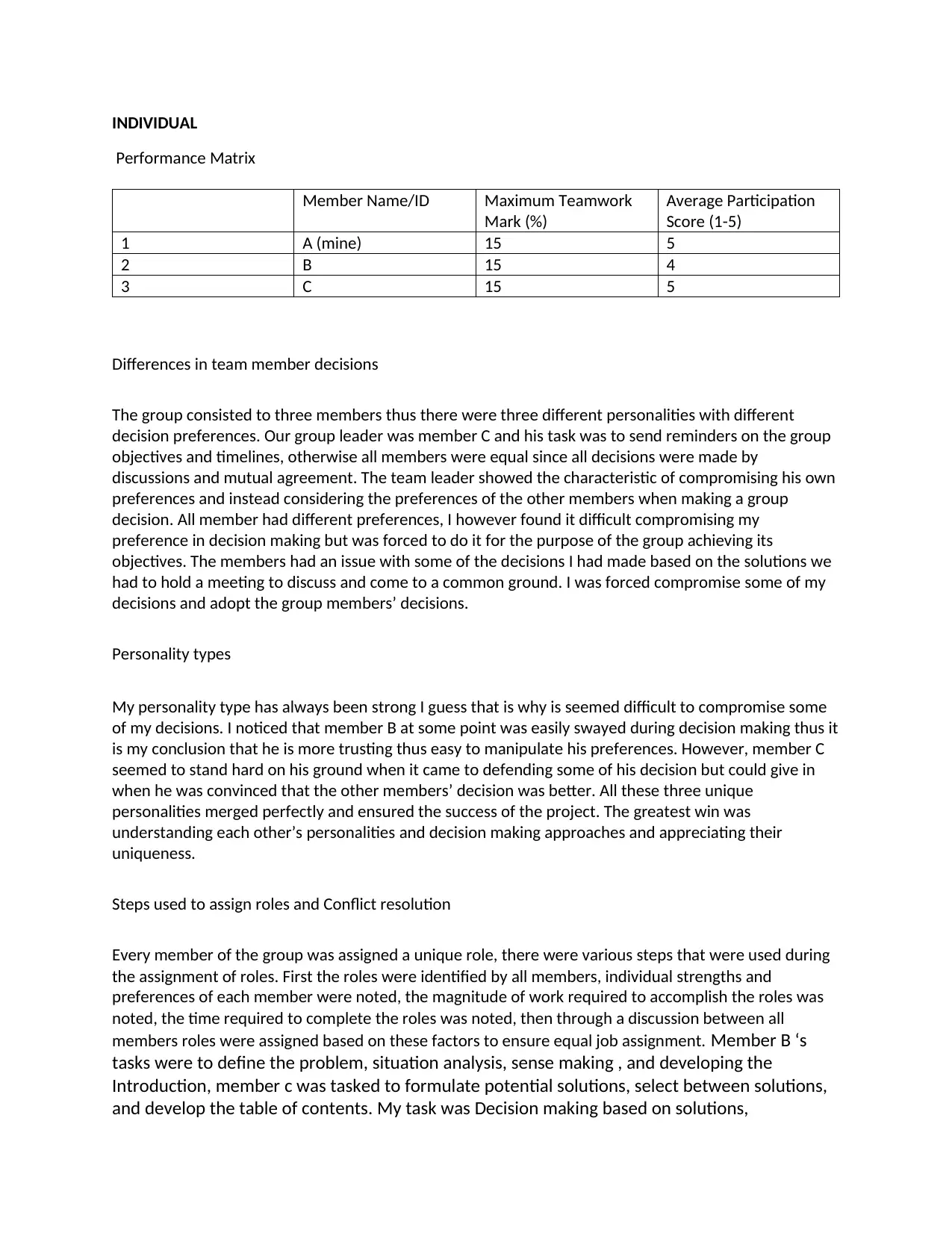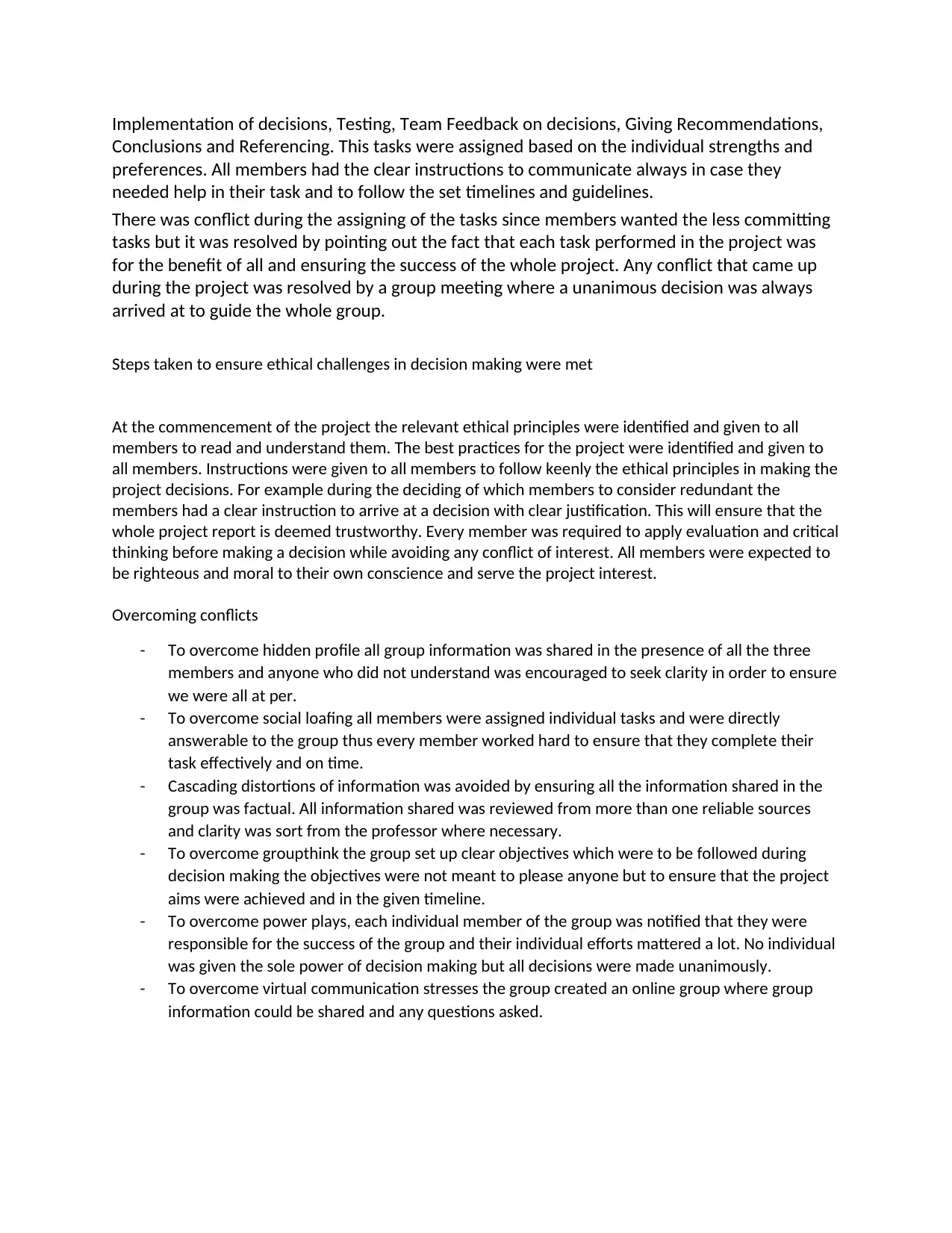MGMT602 Business Decision Analytics: Ethical Redundancy Case Study
VerifiedAdded on 2023/05/29
|2
|971
|254
Case Study
AI Summary
This case study examines the complexities of making redundancy decisions within a business context, focusing on a team project that required dismissing a company in order to maintain internal and external factors. The report details the team's process of designing a system for personnel dismissal, emphasizing decision-making strategies, leadership approaches, and the integration of ethical principles. The team utilized Excel to create a dynamic table system for evaluating employees based on various criteria, adapting and improving the model through iterative discussions and decision-making. The case study highlights the importance of understanding team member personalities, assigning roles based on individual strengths, and resolving conflicts through open communication and unanimous decision-making. Furthermore, it addresses the ethical challenges involved in redundancy decisions, ensuring fairness, transparency, and adherence to ethical guidelines. The team also implemented strategies to overcome common group pitfalls such as hidden profiles, social loafing, information distortion, groupthink, power plays, and virtual communication stresses, ultimately leading to a successful project outcome. The document is contributed by a student and available on Desklib.
1 out of 2







![[object Object]](/_next/static/media/star-bottom.7253800d.svg)